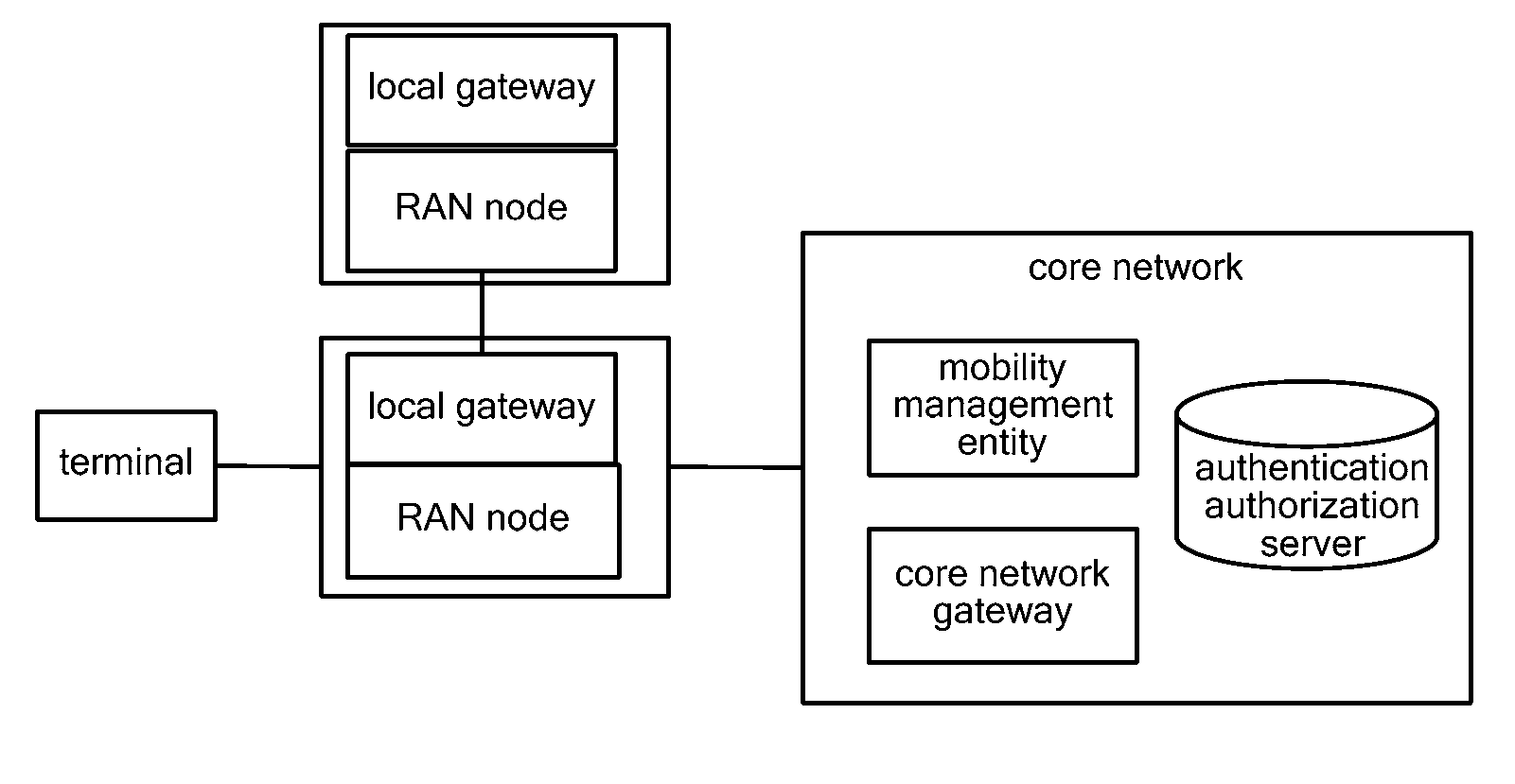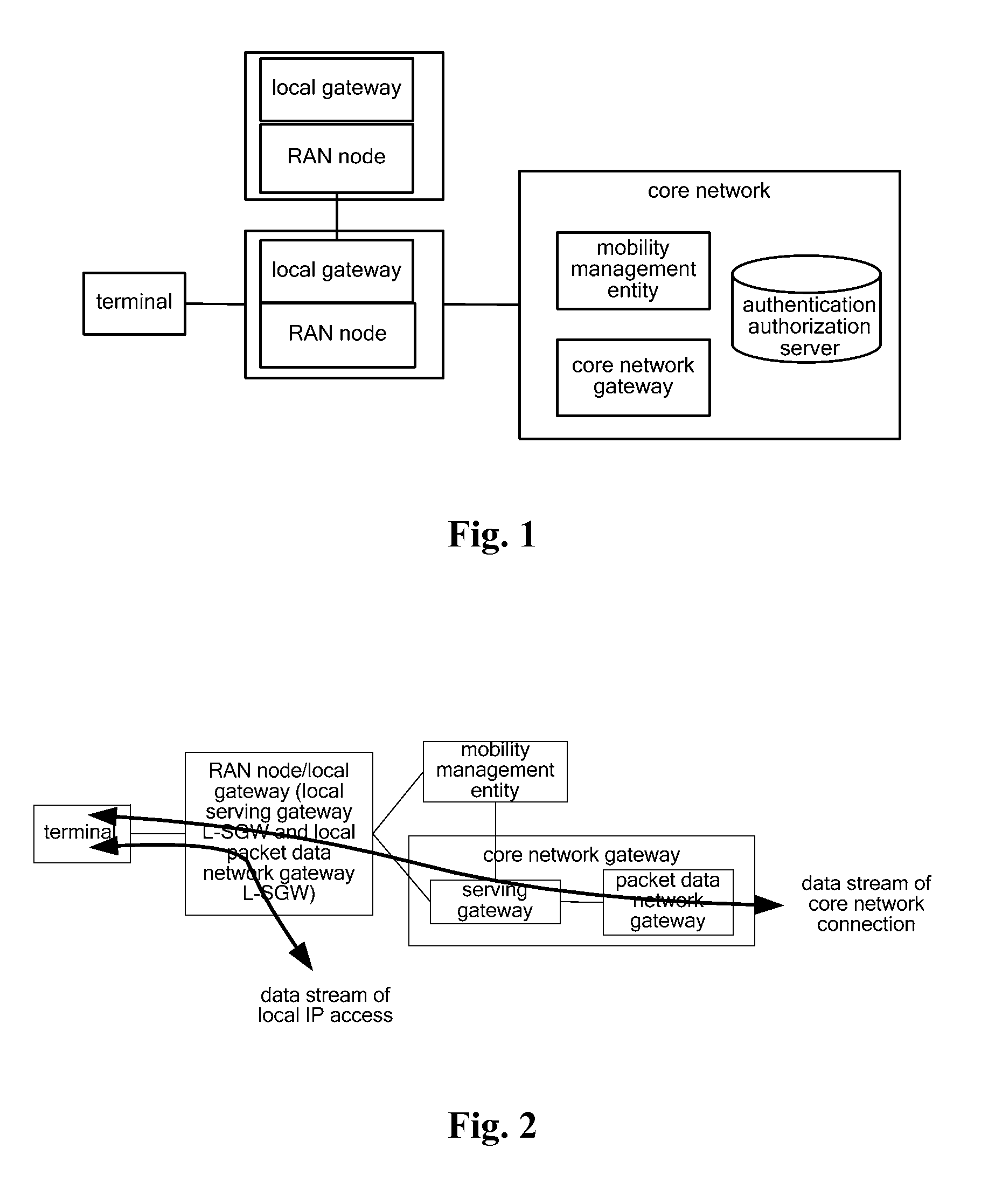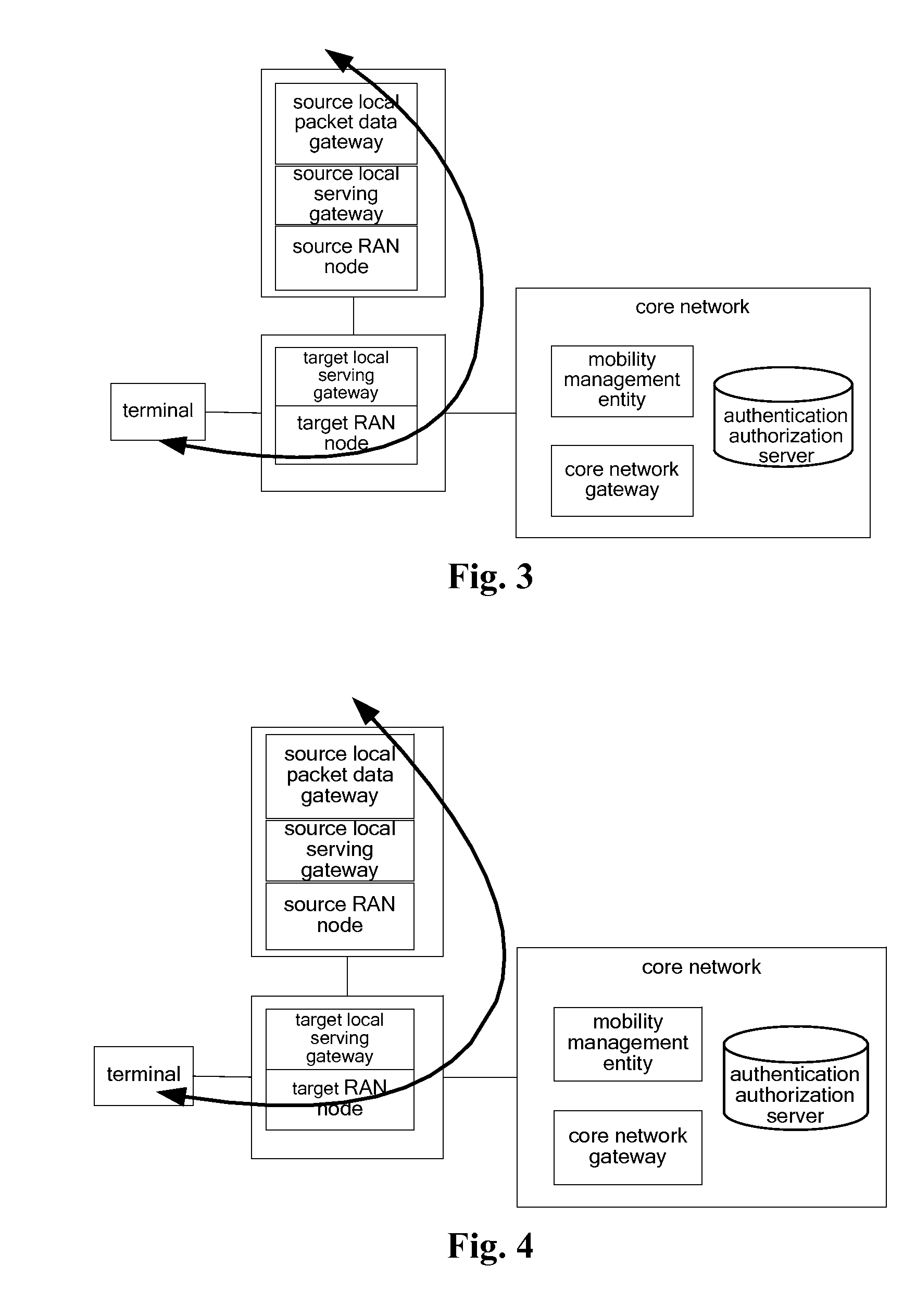Method for Managing Local IP Access Connection
- Summary
- Abstract
- Description
- Claims
- Application Information
AI Technical Summary
Benefits of technology
Problems solved by technology
Method used
Image
Examples
embodiment 1
[0058]FIG. 7 is a flowchart of the handover process of a terminal based on the system shown in FIG. 1 of the present invention. In this embodiment, the source mobility management entity determines whether mobility is supported according to the local gateway information or closed subscriber group (CSG) information, and newly adds a forward relocation acknowledge message. The specific steps are described as follows.
[0059]Step S601: the RAN node determines that it needs to initiate an S1 handover.
[0060]Step S602: the source RAN node sends a handover required to the source mobility management entity.
[0061]Step S603: the source mobility management entity sends a forward relocation request message to the target mobility management entity.
[0062]Step S604: the target mobility management entity can initiate a session establishment procedure of the core network and local IP access connection toward the core network gateway.
[0063]Step S605: the target mobility management entity requests the ta...
embodiment 2
[0084]FIG. 8 is a flowchart of the handover process of a terminal based on the system shown in FIG. 1 of the present invention. In this embodiment, the source mobility management entity determines whether mobility is supported according to the local gateway information or CSG information, and modifies the Forward Relocation Complete acknowledge message. The specific steps are described as follows.
[0085]Step S701: the RAN node determines that it needs to initiate an 51 handover.
[0086]Step S702: the source RAN node sends a handover required to the source mobility management entity.
[0087]Step S703: the source mobility management entity sends a forward relocation request message to the target mobility management entity.
[0088]Step S704: the target mobility management entity can initiate a session establishment procedure of the core network and local IP access connection toward gateway.
[0089]Step S705: the target mobility management entity requests the target RAN node to perform handover....
embodiment 3
[0109]FIG. 9 is a flowchart of the handover process of a terminal based on the system shown in FIG. 1 of the present invention. In this embodiment, the source mobility management entity determines whether mobility is supported according to the CSG information. The specific steps are described as follows.
[0110]Step S801: the RAN node determines that it needs to initiate an 51 handover.
[0111]Step S802: the source RAN node sends a handover request to the source mobility management entity, which request carries the target CSG identifier.
[0112]Step S803: the source mobility management entity determines whether mobility is supported.
[0113]The method for determining whether mobility is supported is as follows: if the CSG identifier changes, then the mobility management entity deems that mobility is not supported, or the mobility management entity determines whether the initial CSG identifier and the target CSG identifier of the user belong to a CSG list which supports mobility (if yes, the...
PUM
 Login to View More
Login to View More Abstract
Description
Claims
Application Information
 Login to View More
Login to View More - R&D
- Intellectual Property
- Life Sciences
- Materials
- Tech Scout
- Unparalleled Data Quality
- Higher Quality Content
- 60% Fewer Hallucinations
Browse by: Latest US Patents, China's latest patents, Technical Efficacy Thesaurus, Application Domain, Technology Topic, Popular Technical Reports.
© 2025 PatSnap. All rights reserved.Legal|Privacy policy|Modern Slavery Act Transparency Statement|Sitemap|About US| Contact US: help@patsnap.com



